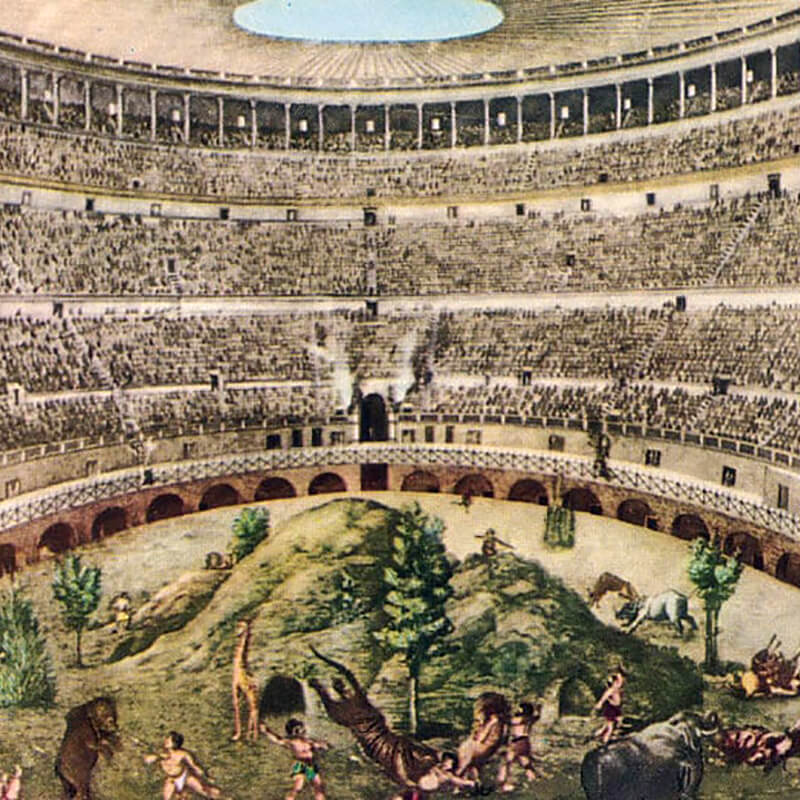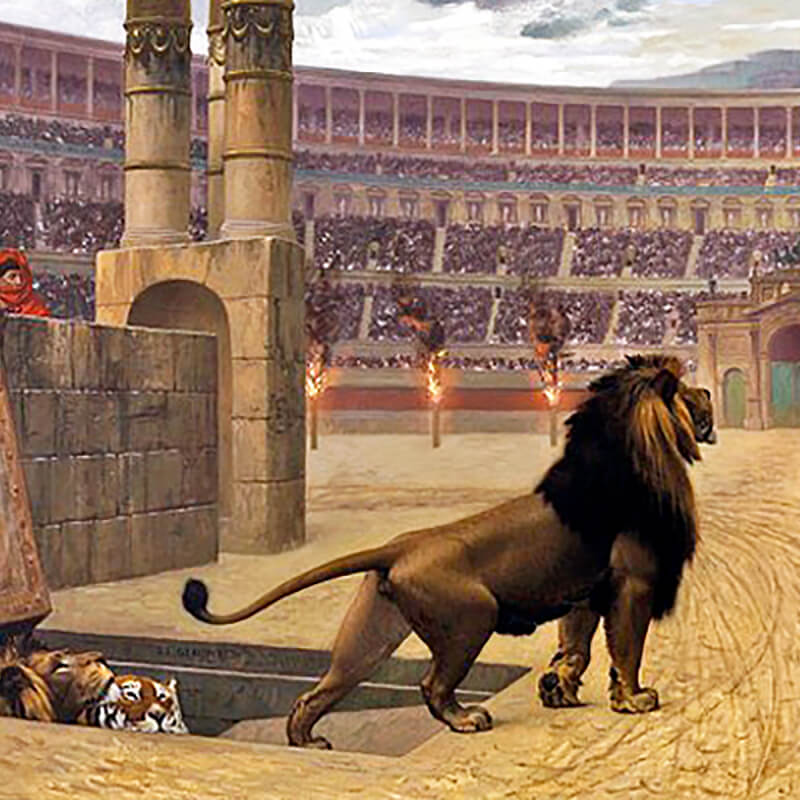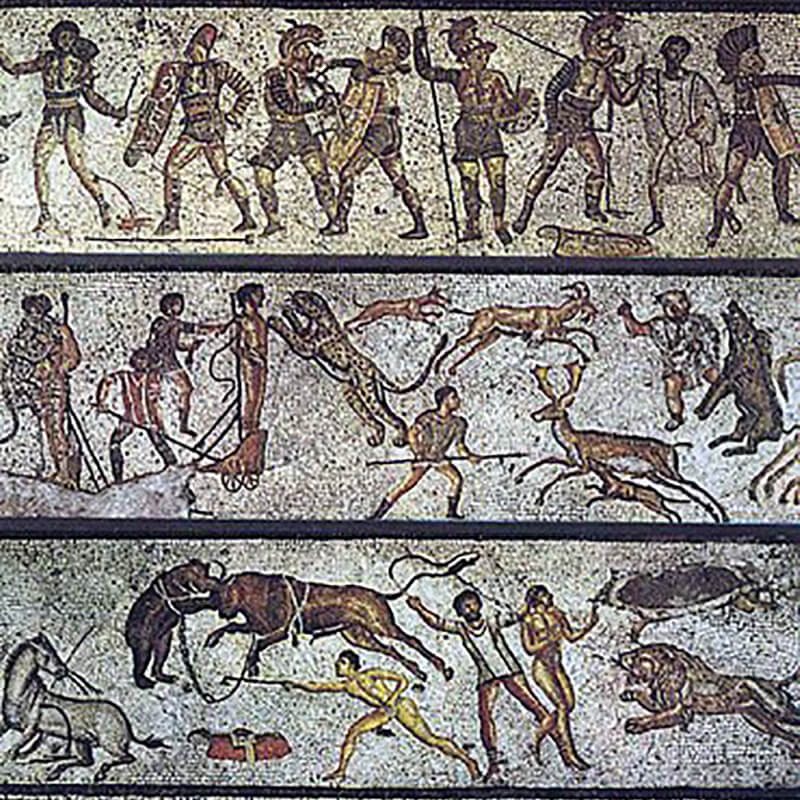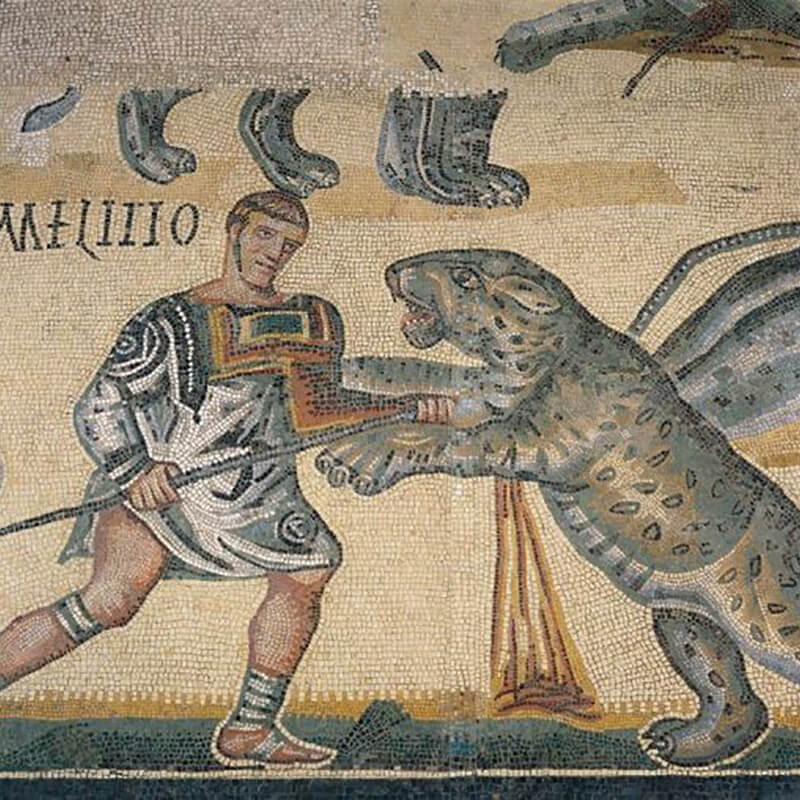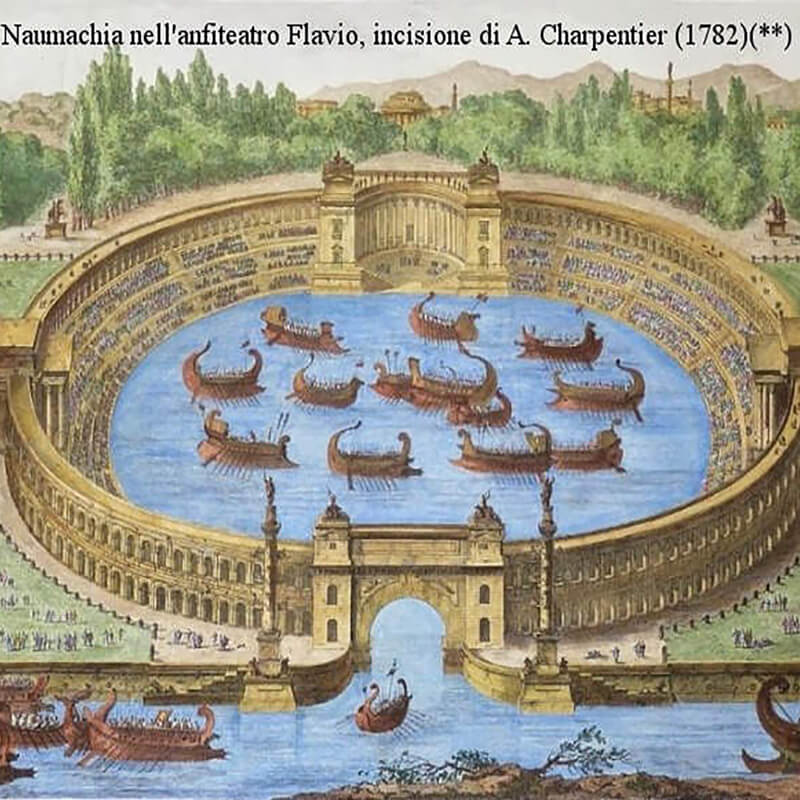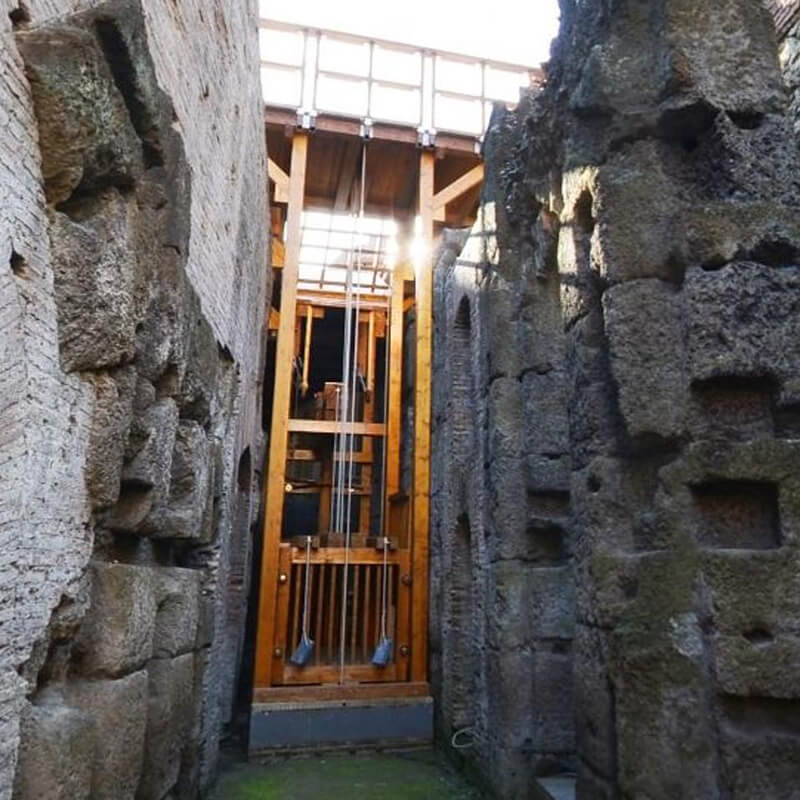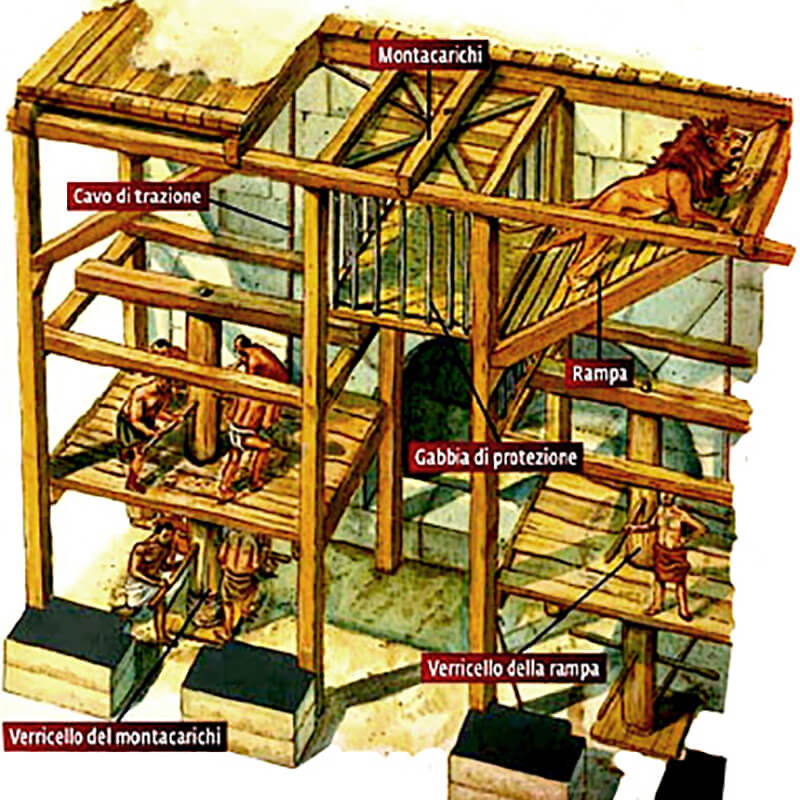We published our last article last month, during the Paris Olympic Games, and we couldn’t resist the temptation of talking about the ancient Olympics organized in the ancient Rome. A month passed by, and we don’t hear about the Olympics anymore in the news, while the Games of the Coliseum in ancient Rome were lasting much longer. For example, the inaugural games at the Coliseum’s opening lasted 100 days. In that spirit, today we will continue to talk about the Flavian Amphitheater to understand how its scenographic machine worked, allowing the creation of impressive events at the Colosseum.
Certainly the elements that characterised and made these exciting shows possible were walkways and freight elevators. Originally, 28 freight elevators were installed in the Colosseum’s hypogea, placed along the perimeter of the arena. These were structures invisible to spectators but which could suddenly project animals of the most varied species onto the stage, to liven up hunting shows or to carry out death sentences (damnatio ad bestias). All this can suggest a direction capable of planning simultaneous openings in different points of the arena, in order to shift the attention of the Colosseum audience from one part of the stage to the other.
Among the various ingenious structures that could be found in the basement of the Colosseum there were also twenty platforms placed in the center of the basement of the Flavian Amphitheatre, which were operated to raise large sets on the arena floor, making everything as truthful as possible but also passionate and engaging. This structure lasted only until 217, when a terrible fire destroyed a good part of the structures and in the following renovation it was decided to position the elevators for the animals only in the central corridors, abandoning the lateral ones.
Today these structures, originally made with perishable materials, have been almost completely lost but it has still been possible to recreate an original freight elevator based on historical sources, and on the traces left in the wall structures, such as the vertical grooves obtained in the tuff. This structure was made up of two wooden elements, which had two different functions: the cage and the winch lifting system. The central pole of the winch rotated on its axis to collect the ropes that lifted the cage upwards. Elements such as ball bearings, pulleys, hemp ropes, winches and hoists, in fact, multiplied the force of the winch and allowed the cabin with the animals inside to be raised, lifting a weight that could reach 300 kilos or perhaps exceed it.
These devices worked with human traction and to reach the arena floor, about 7 meters higher, approximately 15 turns of the winch were needed. The men who provided the driving force worked on two superimposed levels: 4 below and 4 above. Therefore, considering that there were originally 28 freight elevators, at least 224 people were needed to operate all the freight elevators and platforms inside the Colosseum at the same time. The lifting of the cage simultaneously caused, through the tension of a system of ropes, the opening of a trap door on the arena floor. When the cage reached its end, an exit opened on one side followed by an inclined walkway that led directly onto the arena floor and which the animal identified as a way out.
We can only imagine the conditions of these exotic animals captured in distant places, perhaps surviving long sea voyages only to be left to starve for days, perhaps in an angry state before a show, all with the aim of pleasing and entertaining the public. We are talking about different species of animals such as lions or other large cats, bears, ostriches, wild boars, deer and wolves, whose remains were found in the hypogea of the Colosseum and are today displayed in the showcases on the upper floor of the Colosseum.
In addition to the lifts, as we have already mentioned, there were also various platforms, around 20 mobile platforms measuring around 5 by 4 metres, created in the wooden floor of the Colosseum arena. These platforms could be unhooked and slowly lowered along joints made in the walls of the corridor, traces of which can still be seen today. When these platforms reached the end of the corridor, the sets were assembled, and subsequently they were raised again to the arena floor, also suddenly appearing in the sight of the spectators. This system guaranteed every movement of these floors a great surprise effect, always arousing great amazement.
The operation of these platforms was similar to that of freight elevators; in fact, even in this case these structures were lifted using a system of ropes that twisted around the vertical pole of winches operated by the staff working in the Colosseum‘s basement. These sets (like the animals) were transported from the outside of the building to the base of the platforms, through long corridors (called cryptoporticus) which were connected to the basement of the amphitheater.
In fact, we have already mentioned in previous articles on the Colosseum and its underground, a good part of these scenic installations were created and kept, initially, in the vestibule of the Domus Aurea, located next to the Colosseum and converted into a warehouse for the materials of the shows. Even today, almost 2000 years after the inauguration of the Colosseum, it is possible to see various signs left by these structures such as those that indicate the presence of wooden tracks, probably used for the transport of the sets. These elements were also composed of low walls and inverted U-shaped tuff blocks which were probably placed to support service walkways on which those responsible for assembling and composing the sets worked.
The basement of the Colosseum has undergone great changes over the centuries, and among these the most revolutionary was following a terrible fire that broke out in the amphitheater in 217 and which destroyed the wooden structures of the attic, the floor of the arena and all the wooden structures in the basement. The damage was so extensive that the amphitheater was closed until 222 AD. At the end of the restoration and reconstruction works, a completely new lifting system will be designed, with as many as 60 hoists located this time in the central corridors. The machine for the shows therefore became both more imposing and more functional: the lifting points were distributed more widely, thanks also to the use of lifts of smaller dimensions than the previous ones, operated simultaneously by a single winch, they could lift men and small and medium-sized animals.
The new system in use also reduced the travel of the elevators which no longer started from the floor of the hypogea, but from the level of a wooden walkway raised by over 3 meters and left slaves and workers free to move and exploit all the space available on the lower level of the corridors. Certainly a better situation than the previous one, where semi-darkness reigned and the air was fouled by the acrid smoke of torches, candles and the stench of wild animals closed in narrow cages.
Do you want to discover other stories, anecdotes and details about the Colosseum and the adjacent archaeological area of the Imperial Forums? Then follow me on the tour dedicated to Archaeological Rome, or let yourself be inspired by the many tours and guided visits in Rome I offer on regular basis.

